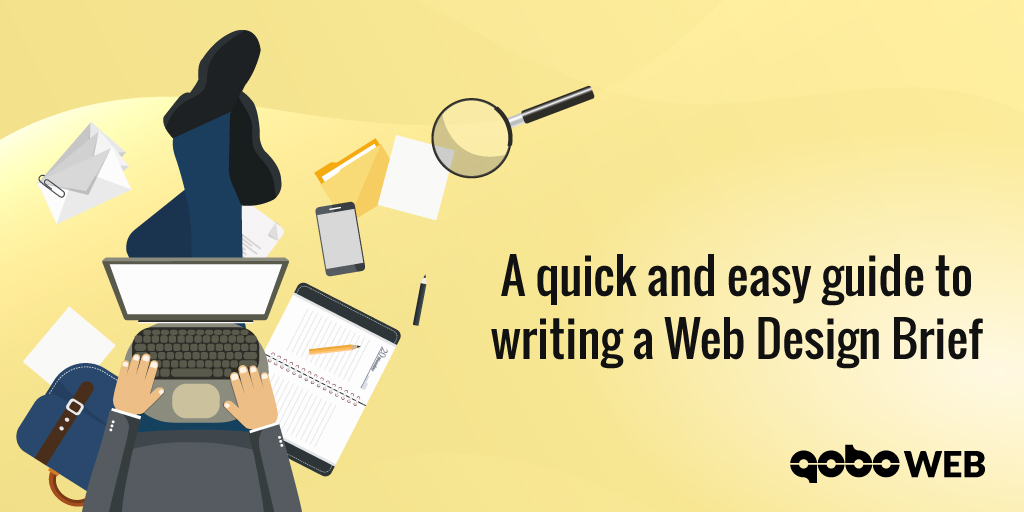Whenever you are starting a project of any sort, you always require a plan. Web design is no different. For a web design agency to create a website that would promote your business and brand, they need a clear understanding of what your expectations and vision are. This is why it is essential for you to provide them with a web design brief.
A web design brief is basically a detailed description of all the requirements you have for your future website. It acts as a guide for the designers and helps them stay focused on your goals and needs. It also allows you to gather all your ideas in one place and make all the needed decisions in advance.
To write a good brief you need to think strategically and mention all the steps of the project, including delivery dates, visuals, integrations etc. Here a few points that can help you get started:
Who you are?
For an agency to understand what type of design they should be creating, they need to understand who the client initially is. That’s why you should always provide background information, such as:
- your mission statement
- company size
- office locations
- field of expertise
- how the company was created
- which goals should the website achieve
All of the above will help the agency understand who they are working for and thus have a clearer vision of what the end product should look like.
Why do you need a website?
To make a website work according to your goals, it has to be designed based on the objectives strived for. Whether you want to raise brand awareness, create an online presence, get more sales or advertise new products, you have to provide clear statements about them in the brief. Mention the selling points and give descriptions of which products or services will be offered on the website. Draw a possible website map to show how many pages the website should consist of. Other possible points to think about are:
- Should the website offer different language layouts? If yes, which ones?
- Which third party systems/ API’s/ feeds should the website integrate with?
- Which call to actions buttons should the website have?
- What are the key features that have to be included (calendars, maps, blog, e-commerce)?
- Will the website require a registration form and a login form? Do you need it to allow multiple user access?
- How often will you be updating the information on the website?
- If you want an e-commerce website, then list which shipping options and which payment options you will need.
Take a look at competitors’ websites, to see what else they are offering, so you can incorporate those features in your brief as well.
Who does the website target?
Give a description of your customer. What is their age group, social class, location? From which industry do they come from? Will they be mostly accessing your website via mobile devices or desktop? Answering these questions in the brief will allow you to make sure the website calls out to the right target audience.
What does your brand look like?
Like any marketing tool, a website should be cohesive with your brand. It should represent your company online and revolve around your goals and mission. If you already have a brand book, you can simply add it as an attachment to your brief. If you don’t, then you will need to make sure that the colour scheme, the fonts, the icons and all other visual aspects of the website are the same as the ones you use for your current PR and marketing materials.
Learn more about picking the perfect colour scheme for your website here.
Content is key
You will need to provide all the content for the website. Starting from product/ service descriptions, going on to blog posts and any other text that you want the website to have. What images do you want to use? Will there be downloadable documents or brochures? Do you want to use videos? Keep in mind that you will also be required to provide the designers with your logo and corporate identity pack, most probably in vector format.
Check out ways to elevate your website content here.
Dates and Costs
Ask the agency to give you an estimate on the project completion date. Divide the whole project into stages with specific due dates outlined, so that it is easier for you to control the project. Be honest about the budget. Let the agency know what the maximum price can be and let them see whether all of the requirements can be achieved with it. Discuss whether the budget includes hosting and maintenance or only the creation of the website.
Technical issues
It might be better to get your IT department to help out on this point. Here are the main things you should consider:
- Do you have a web host, or should the agency provide one?
- Do you have a domain name for your website?
- What platform/CMS do you want the website to be built on?
- Who will be responsible for the website’s maintenance?
- If your website offers e-commerce, is there a need to integrate with the back-end ERP/stock control systems
- Do you have Google analytics and Google maps accounts? If not, you need to set both up
Don’t forget to also give contact details to all the people responsible for the project from your side, so the agency can get in touch when they have questions.
Author: Nadia Ivanova, PR & Digital Marketing Manager at Qobo Group Ltd
